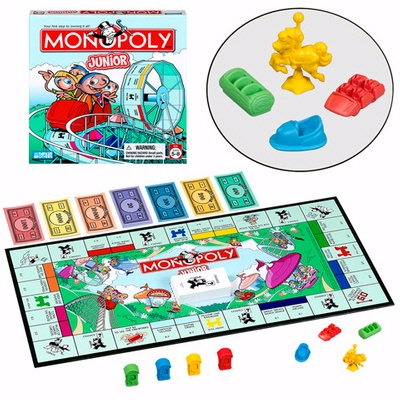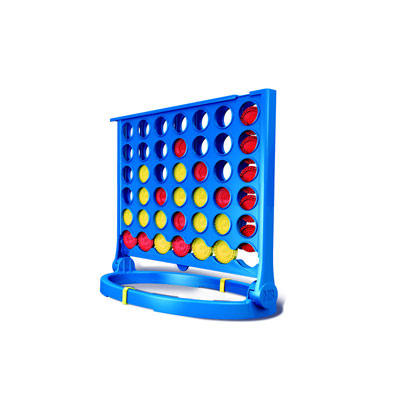It started with game pawns with Chutes & Ladders and Candy Land. They have changed back and forth from plastic to cardboard, and each time the picture/shape changes. The way the game board folds and the box shape changed for Sorry, Monopoly and Scrabble Junior. Also, Scrabble Junior changed the color of the back of all their letters.
Monopoly Junior, the lemonade stands and game pawns have changed since the last edition I had... and they have the same copy write year.
It was Hi-Hi Cheerio that put me over the edge. It used to be, well, cherries and now it's all sorts of different fruits.
Here is my "on the other hand". It is interesting to see the changes in games over time as society changes. Monopoly is a great example of that. The interesting thing about Monopoly is that with all the different versions and editions there are, the most drastic change happened only recently after almost 75 years of being in production.
Here is Monopoly in 1933, 1934 and then the Electronic Banking Edition in 2008.
Two things can be said about this. One of which is really, who cares? Who the hell notices this stuff (except for toy librarians and archivists.) Adults buy these games for kids once usually. And then they have them until the kids are done. They don't have to replace them within a year or two (usually) so they don't see the changes happen.
The second is to mention why it matters to me. Do you have any idea how difficult it is to keep games functional when the pieces keep changing? I have 4 game boards for Candy Land but only 2 in circulation. This probably means that over the course of the years, there have been 5-6 in the collection. Pieces get lost, broken or stolen, it happens all the time. But the great part about having a 25 year old collection of toys is when that happens, if we are lucky enough to get another copy of the game, we have back-up pieces. UNLESS THEY KEEP CHANGING THEM! Because, and this is the point. It isn't that they change them at all. It's that they change them often.








